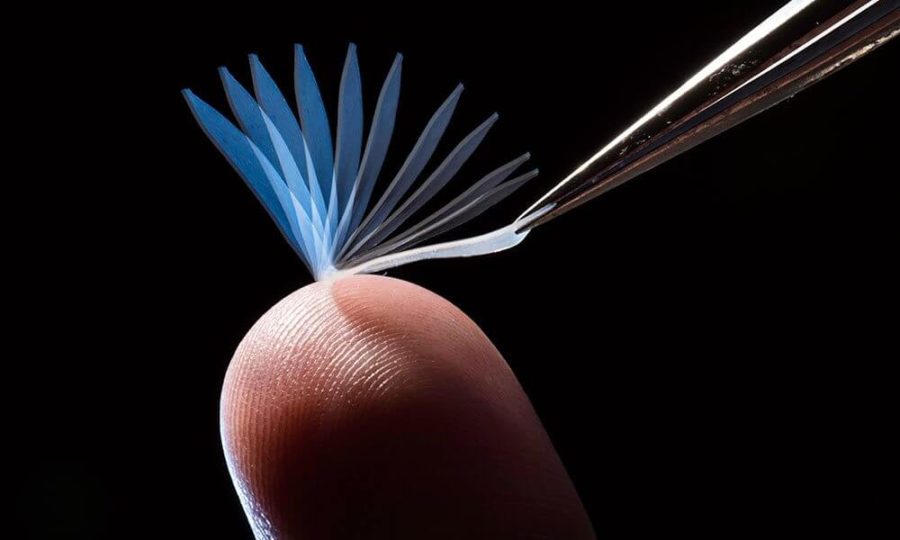It’s nothing new for polymers to change shape when exposed to heat. But researchers at the University of Rochester have created one that can derive its plastic yoga by body heat alone.
The new material, created by Mitch Anthamatten and grad student Yuan Meng, is a so-called shape-memory polymer. That means it can be programmed to keep a given shape until it is triggered by heat to go back to a previous shape.
“Tuning the trigger temperature is only one part of the story,” said Anthamatten. “We also engineered these materials to store large amount of elastic energy, enabling them to perform more mechanical work during their shape recovery”
Figuring out how to control crystallization that takes place when the polymer is cooled or stretched proved to be the tough part of this research. The ability to tune the trigger temperature was achieved by including molecular linkers to connect the individual polymer strands. Anthamatten’s group discovered that linkers inhibit—but don’t stop—crystallization when the material is stretched. By altering the number and types of linkers used, as well as how they’re distributed throughout the polymer network, the Rochester researchers were able to adjust the material’s stability and precisely set the melting point at which the shape change is triggered.
Heating the new polymer to temperatures near 35 °C, just below the body temperature causes the crystallites to break apart and the material to revert to its permanent shape.
“Our shape-memory polymer is like a rubber band that can lock itself into a new shape when stretched,” said Anthamatten. “But a simple touch causes it to recoil back to its original shape.”
Having a polymer with a precisely tunable trigger temperature was only one objective. Of equal importance, Anthamatten and his team wanted the material to be able to deliver a great deal of mechanical work as the shape transforms back to its permanent shape. Consequently, they set out to optimize their polymer networks to store as much elastic energy as possible.
“Nearly all applications of shape memory polymers will require that the material pushes or pulls on its surroundings,” said Anthamatten. “However, researchers seldom measure the amount of mechanical work that shape-memory polymers are actually performing.”
Anthamatten’s shape-memory polymer is capable of lifting an object one-thousand times its weight. For example, a polymer the size of a shoelace—which weighs about a gram—could lift a liter of soda.
Anthamatten says the shape-memory polymer could have a variety of applications, including sutures, artificial skin, body-heat assisted medical dispensers, and self-fitting apparel.
The findings are being published this week in the Journal of Polymer Science Part B: Polymer Physics.

